Whatever you do, do it with complete dedication!
(interviewed in 2023)
Thomas Scheufler
Whether flowers, trees or rhododendrons for flower deliveries, international garden festivals or cities – the Evert family have been passionate gardeners for four generations. Their work uniquely blends art, skill, nature, and fantasy. And the beauty of it is, “It’s never finished. It takes on a life of its own, blossoms over the years, and changes constantly.”
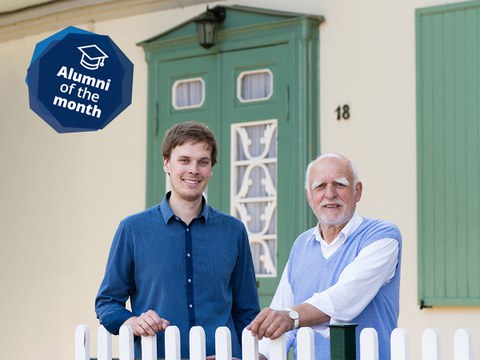
Johannes and Dierk Evert are the alumni of January 2024.
| Name | Dierk Evert |
| Degree program | Landscape Architecture |
| Faculty | Architecture (back then, it was called the “Architecture Section, Field of Study in Landscape Architecture”) |
| At the university | 1968 – 1972 |
| Current work | Freelance |
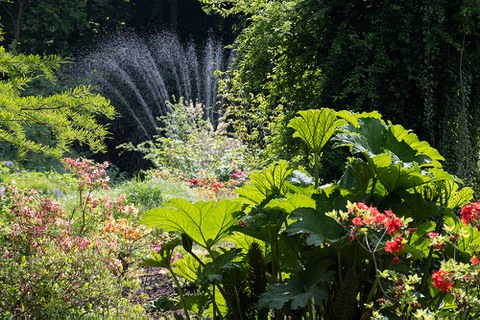
"That's the beauty of our work: it's never finished, it has a life of its own, blossoms over the years and is constantly changing," says Dierk Evert.
| Name | Johannes Evert |
| Degree program | Landscape Architecture (Diplom) |
| Faculty | Architecture |
| At the university | 2007 – 2013 |
| Current work | Freelance |
Why did you decide to study at TU Dresden?

Dierk Evert
Dierk Evert: Because of my parents – my father, Friedrich-Karl Evert, was a garden and landscape architect (he graduated in 1929 from Berlin-Dahlem) and my mother was a professional gardener. They worked in garden design and landscaping and also grew nursery plants and perennial plants. Having experienced not only the planning, but also the cultivation of plants and the construction of green spaces, I was enthusiastic about the profession from an early age and began studying garden architecture at Humboldt-Universität Berlin in 1968. After the German Democratic Republic's 2nd socialist university reform in 1970, the degree program was transferred from Humboldt-Universität Berlin to TU Dresden. Back then, this was the only university program for landscape architects.

Johannes Evert
Johannes Evert: I chose Dresden for various reasons. The size, history and significance of the city interested me. And I wanted to study at a uni. TU Dresden (TUD) only enrolls about 60 first-semester students, which isn’t that many. And I liked the idea of small course sizes. On top of that, the program in Dresden had a good reputation, and I also liked that I had family ties to Dresden, as my father studied here – although that wasn't the deciding factor for me.
What made you chose this degree program?
D.E. : I was familiar with the profession through my father's work as a garden and landscape architect in Rostock, and it matched my interests.
J.E.: I've watched my father work since I was a child. But it wasn't until I was 17 that I realized what I wanted to do. Landscape architecture combines an extremely wide range of skills and tasks. There's a creative side, where we have to combine design with practical usage requirements. And there’s also an engineering side, where we implement our ideas, and I really like that part. We also work both in the office and outside, communicating with colleagues and specialist planners, but also with our clients, members of the public, and future users, which makes our day-to-day work really varied. But what clearly sets us apart among the construction trades is the use of plants as a building material. This is especially important to my family from a traditional perspective. Plants allow us to create different effects not just seasonally, but over a number of years, so we always plan with time as a factor.
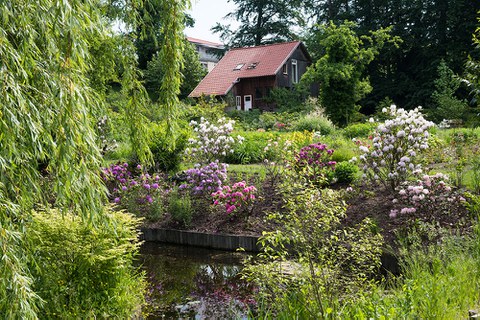
Garden of Dierck Evert on the banks of the Warnow in Rostock-Gehlsdorf, on his cousin's former nursery plot.
Who from research and teaching influenced you the most during your studies?
D.E.: That would have been Prof. Harald Linke (landscape architecture et al), Dr. Siegfried Sommer (botany), Prof. János Brenner (urban planning), Prof. Karl-Franz Busch (hydraulic engineering), and Karl Foerster, with whom I completed an internship in 1967 and who I sometimes also saw during evening visits, or during his dreaded Sunday rounds in the nursery department, then managed by head gardener Paul Bolz. I even had to endure a situation where he asked me to pull out a chrysanthemum variety that was being grown – and still didn't have a name – because he didn't like it anymore. My only option was to quickly replant it behind the nearest screen and talk it over with Dr. Konrad Näser on Monday. But in the end, Karl Foerster's judgment was correct, because the new breed was no good!
J.E.: There are many people at the university who influenced me and I am very grateful for the knowledge they shared with me. This includes the staff at the department of plant use, for which I worked for many years. I would especially like to mention Heiner Luz, Alexander von Birgelen, Barbara Kroll, Jonas Reif, Yvonne Störer and Franziska Hunger. And also my Professor for Landscaping, Irene Lohaus, who supervised my Diplom. She taught me a great deal about our profession. The same goes for the former Director of the Institute and current Vice-Dean Prof. Catrin Schmidt, whose lectures on landscape planning I enjoyed very much because of her excellent lecturing style and her approachability, even though I was more interested in other subjects. The lectures with the architecture professors and other faculties were also really good! I would like to mention here Prof. Niels-Christian Fritsche (architectural delineation), Prof. Jürgen Roloff (botany), and Prof. Hans-Georg Lippert (history of architecture). The seminar on “Architecture Photography” with Till Schuster also had a great influence on me.
Last but not least, I’d like to mention a few people who work at the Institute and who generally get far too little attention. Without Liane Löser, Ilka Werblow and Angela Hendel, the secretaries of our departments, nothing would have worked. They were always happy to help with questions, and I am still grateful for that! I’m sure I’ve forgotten some important people – there were so many!
Where are you employed today, and what are your responsibilities?
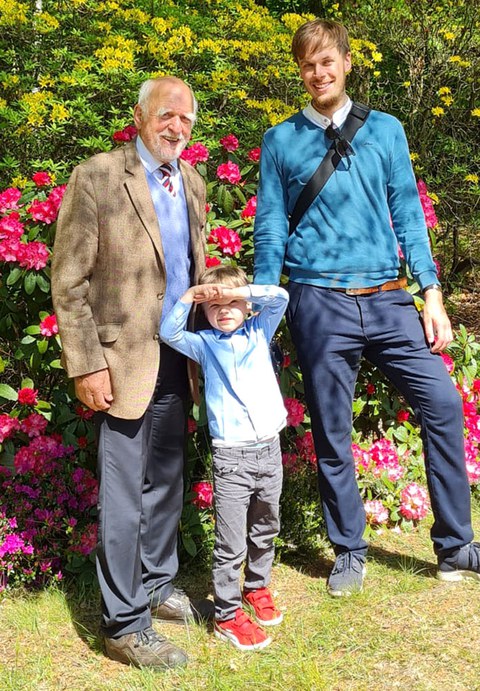
Three generations of Evert (from right, Johannes, Frederik, Dierk Evert). Will Johannes Evert's son Frederik continue the family tradition?
D.E.: I’m a freelance landscape architect working in Northern Germany (between Berlin, Hamburg, and Rügen) and since 2023, I have been working together with my son, Dipl. Ing. Johannes Evert, who is in line to take over the business.
J.E.: I work as a freelancer together with my father in Rostock. We've been working together for four years now in a company that's been around for over 30 years. We design various outdoor facilities for many different clients.
What advice would you give to our current first-years?
D.E.: Whatever you do, give it your all, and enjoy working with the living material that is plants. This was what Karl Foerster told me during one of those evening “audiences”!
J.E.: Never stop enjoying what you study. There are hard times when you don't know where your head is because of all the assignments, practicals, lectures and other tasks you have to complete. At the same time, you’ll get lots of opportunities and can benefit from a wealth of knowledge. You should take advantage of this. Try to make the most of it. You can look forward to a really exciting and varied profession!
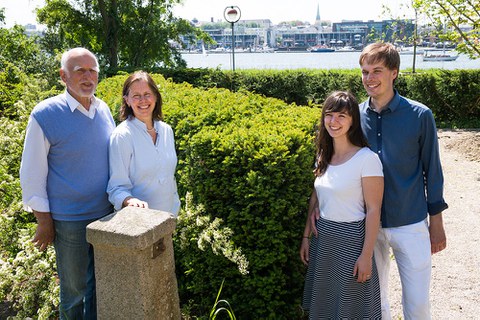
Father and son on a family walk along the banks of the Warnow.
What do you remember most fondly about your time as a student?
D.E.: The excursions at the end of the year and the other semesters – especially during the time in Berlin.
J.E.: Excursions to Italy, England and France, for example, were very enriching. You rarely experience so much input in so little time, coupled with the concentrated expertise of the professors traveling with you. As a city, Dresden is just amazingly beautiful and liveable. The same applies to the surrounding region. I still love going back there to visit. But what makes it so special is probably the combination of everything, the degree program, the city, and the people. They made a deep impression on me and will stay with me.
What was your favorite place on campus?
D.E.: That was in the Schumann Building, the mezzanine on the 5th floor, or Sundays at the Carolaschlößchen in the Großer Garten park, if we still had enough money from the scholarship, together with other students and fellow residents from our hall of residence in Tiergartenallee.
J.E.: I don’t have one. The campus is far too complex and varied. It could be the canteens, the courtyards of the Barkhausen and Hülsse buildings, particularly beautiful lecture halls, study rooms used by other students, the pub or the Fritz Foerster building, which had not yet been renovated, during the architectural photography seminar – I associate all these places and more with special memories.
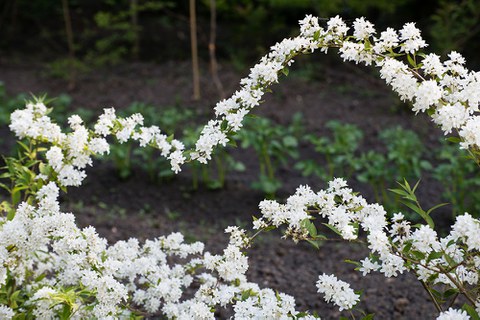
Quotes from perennial gardening legend Karl Foerster: "You have to be intelligent if you want to be lazy in the garden." And: "One life is far too short for the gardening profession."
What still has a lot of value for you today/would you like to have had more of?
D.E.: Primarily the joint lectures with the architects and foresters in Tharandt. I would have liked to have heard more about nature conservation and environmental protection, and also to have taken part in more international excursions, which was unfortunately not possible at the time.
J.E.: I really appreciated the connection with students of architecture, forest sciences, geography, etc., with whom we sometimes attended lectures and practicals. As far as our institute is concerned, I noticed early on in my day-to-day work how varied our training was and how well we were prepared for our profession. I would criticize the amount of work we had to complete in some semesters. I'm a fan of a full timetables and a busy schedule myself, but some of things we were asked to do were just too much. Some of my fellow students had major problems and some even gave up their studies. I also had back problems at times, which shows the strain we were under. Over the years, I’ve learned how to manage the pressure. But this experience hasn’t been helpful in my later life. I hope this has since changed for the better.
What tips do you have for hitting the ground running in your industry?
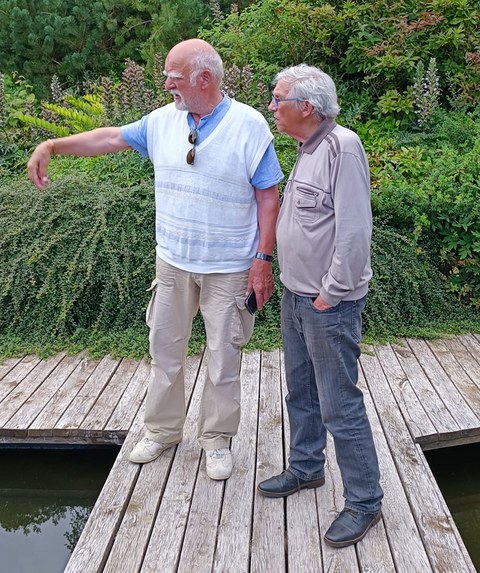
Dierck Evert in 2022 with the garden architect Karl Wienke, whom he admires. At 90, he is still active. He did an internship with him in the summer of 1970. He was a great teacher for him in design and the use of plants.
D.E.: Get used to handling plants through internships in good companies and start working in renowned, initially smaller offices where you are also involved in construction management. This is where you can learn the practical aspects of planning work, and you are sometimes able to correct errors or missing details on the construction site.
J.E.: The degree program offers a very good technical grounding for this. Even though I had to learn a lot of new things or improve my knowledge when I started my career in the office – such as project management and communicating with clients – I felt very well prepared in terms of expertise and content. Also in comparison to my colleagues from other universities, I always had the impression that my studies were excellent. No alumni of TUD needs to worry about this.
What connects you to TU Dresden today?
D.E.: Interest in good teaching by successful university lecturers; knowing that highly skilled graduates come from TUD when compared with other German universities; and also pride in being part of the first landscape architecture class to graduate from TU Dresden in 1972.
J.E.: Many things. Without Dresden and TUD, with all that I was able to learn and experience there, I would not be where I am today. I was able to gain many insights into my field through a variety of courses, practicals, excursions and, above all, the people I met, which still influence my approach to projects today. A degree program can't teach you everything, but it should lay as broad a foundation as possible on which you can build. And that’s exactly what I got from TU Dresden.

"That's the beauty of our work: it's never finished, it has a life of its own, blossoms over the years and is constantly changing," says Dierk Evert.
Contact:
Dierck Evert
Johannes Evert
